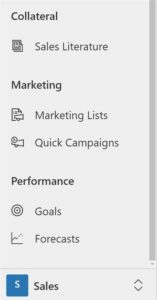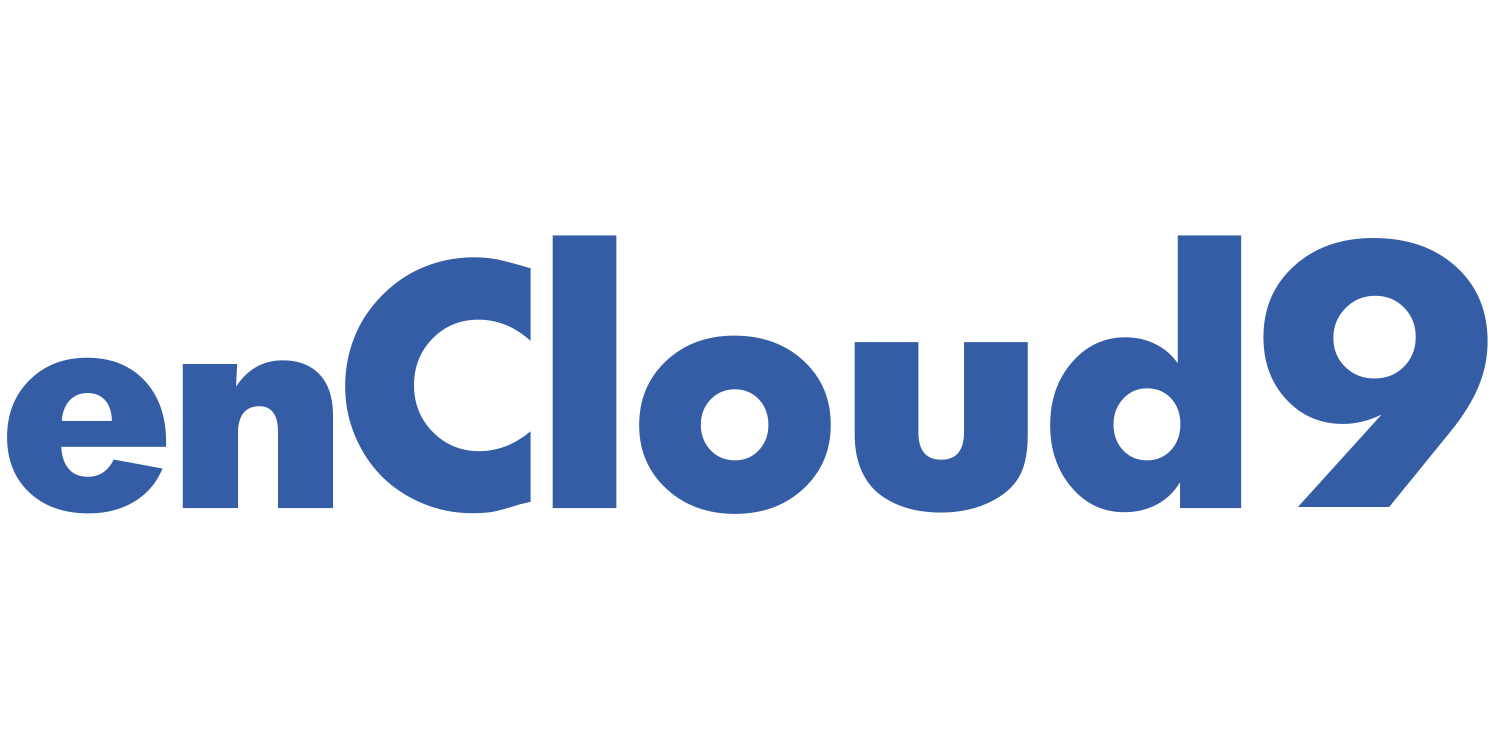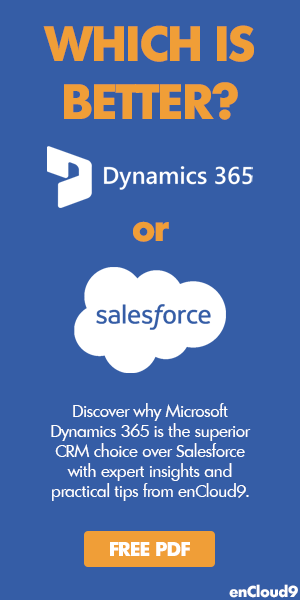This blog was initially posted in 2020 and has been refreshed in 2023 to reflect the latest updates and developments.
Stop the Guesswork: Mastering Sales Forecasting in 2023!
Predicting your organization’s revenue accurately remains an indispensable facet of sound business management. A precise revenue forecast equips you with the tools to strategize effectively, allocate resources optimally, make informed decisions, streamline budgeting, and manage resource allocation efficiently. The result? You save not only time but also valuable financial resources. Amidst the ever-evolving landscape of business technology, one standout feature has continued to shape the way we forecast sales: Dynamics 365 Sales Forecasting. Although initially introduced as part of the 2020 Release Wave 1, its evolution and enhancements have paved the way for an even more potent toolset in 2023. In this two-part blog series, we embark on a journey to explore the depths of this transformative feature. Part 1 provided an insight into the fundamentals of sales forecasting and how to configure forecasts. Now, in Part 2, we delve deeper into the intricacies of viewing and analyzing sales forecasts.
Viewing a Sales Forecast: The Prerequisites
Before diving into the intricacies of viewing a sales forecast, it is essential to set the stage. Reviewing prerequisites and establishing secure roles is the first step. To configure a sales forecast, you must possess either a system administrator or forecast manager role. These roles are critical not only for ensuring visibility but also for facilitating adjustments and changes. For more in-depth guidance on setting up viewing permissions, consult Microsoft’s comprehensive documentation on viewing permissions. Additionally, to explore the process of configuring a sales forecast in more detail, revisit Part 1 of our Sales Forecasting series or join our Sales Forecasting webinar. During our webinar, we will provide comprehensive insights not only into constructing monthly, quarterly, or annual sales forecasts for your sales team but also into leveraging forecasts in tandem with your Dynamics 365 Goals and crafting customized reports.
The Value of Using Sales Forecasting
Sales Forecasting empowers your organization to peer into the future and predict the amount of revenue your sales team will generate within a given timeframe. This ability to anticipate revenue plays a pivotal role in your company’s trajectory. By harnessing the potential of a forecast:
- Sellers can meticulously track their performance against predetermined targets, spot potential pipeline vulnerabilities that could jeopardize target attainment, and nimbly address issues before they escalate. They can also leverage forecast data to cater to specific timeframes, whether it’s the fiscal year, month, or quarter.
- Managers can monitor individual sales performance vis-à-vis quotas, providing timely coaching and guidance to their teams. Informed decision-making becomes their hallmark.
- Directors gain the ability to utilize forecast trends for anticipating departmental sales and reallocating resources as required. Their strategic vision is fortified.
- Organization leaders can harness projected estimates to pivot product strategies, convey updated projections to investors, and drive informed, high-level decision-making.
With enCloud9, you can navigate the ever-evolving landscape of sales forecasting with confidence and precision. Don’t leave your revenue to chance; master the art of Sales Forecasting in 2023!
Navigating the Sales Forecasting Terrain
To access Sales Forecasting within Dynamics 365:
Sign in to the Sales Hub. At the bottom of the site map, select “Change area,” and then choose “Sales.”

Under “Performance,” select “Forecasts.”

Upon reaching the grid page, take the following steps:
- Choose a forecast from the drop-down list (Forecasts that you have permissions for will appear here).
- Select the desired forecast period from the drop-down list. The options in this list align with the number of forecast periods defined in the forecast configuration, with the current period as the default.
- As the administrator sets up the forecast, they can opt to customize it or employ out-of-the-box categories. The out-of-the-box categories include:
- Users: Showcases the hierarchy of users as defined by the Manager field. This hierarchy is instrumental in the forecast’s structural integrity.
- Quota: Sets a target amount for a specific owner over a defined timeframe, with the progress bar calculated against this value.
- Pipeline: Reflects the aggregated (rolled-up) value of estimated revenue for all open opportunities categorized as “Pipeline” (low confidence). This value is subject to adjustment during the forecast.
- Best case: Aggregates the estimated revenue from all open opportunities categorized as “Best Case” (medium confidence). As with the Pipeline category, this value can be adjusted during the forecast.
- Committed: Combines the estimated revenue from all open opportunities labeled as “Committed” (high confidence). This category’s value, too, can be fine-tuned during the forecast.
- Omitted: Presents the aggregated (rolled-up) value of excluded revenue for all open opportunities marked as “Omitted.”
- Won: Highlights the aggregated (rolled-up) value of revenue generated from all won opportunities tagged as “Won.”
- Lost: Showcases the aggregated (rolled-up) value of revenue lost from all opportunities categorized as “Lost.”
For in-depth insights into viewing a sales forecast, we have included a video provided by Microsoft for your reference.
Artificial Intelligence (AI) in Sales Forecasting
AI and Machine Learning Integration: Sales forecasting has seen a substantial integration of AI and machine learning. AI-driven algorithms can analyze vast datasets, identifying patterns and trends that were previously challenging for human analysts to spot. This has led to more accurate and dynamic sales predictions. To learn more visit Eliminate the Guesswork with Sales Forecasting: Part 1
In-Depth Analysis with Predictive Forecasting
Harnessing predictive forecasting is yet another realm to explore in 2023. To unlock this potential, a Dynamics 365 Sales Insights license must be acquired or a trial initiated. Predictive forecasting leverages AI-driven models that rely on a blend of data and the open sales pipeline to anticipate future revenue outcomes. This sophisticated approach allows sellers and managers to enhance forecast accuracy based on historical data. A key feature to look out for is the prediction column, which provides an in-depth glimpse into future revenue outcomes.
Other substantial changes
Several significant changes have occurred in the field of sales forecasting since 2020. These changes are driven by advancements in technology, data analytics, and a shift toward more data-driven decision-making. Here are some key developments in sales forecasting since 2020:
- Predictive Analytics: The use of predictive analytics has become more widespread. Companies are leveraging historical data, customer behavior, and market trends to make data-backed sales predictions. Predictive models have become more sophisticated, allowing for more accurate forecasts.
- Real-Time Data: Sales forecasting has moved toward real-time data analysis. With the advent of cloud computing and real-time data integration, businesses can now access and analyze sales data in real-time, allowing for more agile decision-making.
- Advanced CRM Integration: CRM (Customer Relationship Management) systems have evolved to offer more robust sales forecasting capabilities. Modern CRM platforms can provide real-time sales insights, automate data entry, and offer predictive analytics features.
- Demand Forecasting: Sales forecasting has expanded to include demand forecasting for supply chain management. AI-driven models are used to predict product demand, helping companies optimize inventory levels and production schedules.
- Customer-Centric Forecasting: There is a greater focus on customer-centric sales forecasting. Businesses are segmenting customers based on their behaviors and preferences, allowing for more personalized sales strategies and improved forecast accuracy.
- Big Data Utilization: The growth of big data has provided a wealth of information for sales forecasting. Companies are now leveraging external data sources, such as social media trends and economic indicators, to enhance their forecasts.
- Scenario Planning: Sales forecasting has incorporated more scenario planning capabilities. Businesses can simulate different scenarios, such as market disruptions or changes in pricing strategies, to assess their impact on sales forecasts.
- Improved Forecast Visualization: Data visualization tools have improved, making it easier for sales teams to interpret and act on forecast data. Interactive dashboards and reports provide a clearer picture of sales performance.
- Increased Automation: The automation of sales forecasting processes has become more prevalent. This includes automated data collection, model training, and even automated forecast updates based on changing data.
- Sales Technology Ecosystem: Sales forecasting is now part of a broader sales technology ecosystem. It integrates with other tools like marketing automation, CRM, and sales analytics, creating a more comprehensive view of the sales process.
- Ethical AI and Fairness: There is growing awareness of ethical considerations in AI-driven sales forecasting. Companies are placing more emphasis on fairness, transparency, and bias mitigation to ensure that forecasts are not discriminatory or unfair.
- Collaborative Forecasting: Collaborative forecasting has gained traction, allowing various departments and teams within an organization to contribute to the sales forecast, leading to more accurate predictions.
How We Can Help?
To delve deeper into accurate revenue prediction and take control of your sales forecasting capabilities with Microsoft Dynamics 365, reach out to enCloud9. Discover how Sales Forecasts can elevate your company’s trajectory towards success.
enCloud9 is one of the most recognized and respected Microsoft Solution Partners for Business Applications. Leveraging the powerful capabilities of the Microsoft stack, enCloud9’s team of certified professionals help small to medium sized businesses optimize their customer interactions, drive sales growth, and streamline marketing. Our dedication to achieving excellence, prioritizing customers, and possessing extensive industry expertise positions us as the preferred choice among businesses.
Join us on a path to success! Contact enCloud9 today to supercharge your sales forecasting capabilities and transform the way you do business with Microsoft Dynamics 365. Let’s make informed decisions, drive growth, and achieve your sales goals together.


